German Food Dishes: Basic Overview
Common Ingredients
Common Cooking Methods
Courses
Meals
Key Taste
Eating Etiquette
Meal Presentation
Culinary Festivals
Influence and Fusion
Popular Types of German Dishes
-
Cakes and Pastries
German cakes and pastries are renowned for their richness and variety.
These baked goods are not just limited to sweet varieties; some incorporate savory elements.
They range from light and airy to dense and moist.
Seasonal ingredients play a significant role, with special versions appearing during festivals and holidays
-
Desserts
German desserts are characterized by their inventive use of ingredients and presentation, offering a wide range of flavors from sweet and creamy to tangy and fruity.
They often incorporate dairy products like cream and cheese, creating textures that are both rich and satisfying.
-
Fried Dishes
These dishes often feature meats or vegetables that are breaded and fried to perfection, resulting in a crispy exterior and tender interior.
Potatoes, a staple in German cuisine, are also commonly prepared in various fried forms, serving as a beloved side dish.
-
Charcuterie and Cheese Boards
German charcuterie and cheese boards feature an assortment of sausages and cheeses that reflect regional traditions and flavors.
The charcuterie component is highlighted by a variety of wurst, such as bratwurst, wiener, and blutwurst, each offering a distinct taste and texture.
-
Stews
German stews are a cornerstone of the cuisine, known for their robust flavors and the use of a variety of meats and vegetables.
These slow-cooked dishes are a testament to the German approach to comfort food, offering warmth and heartiness in every spoonful.
-
Bread and Doughs
Bread and dough-based foods hold a special place in German cuisine.
From dense, dark ryes to light, fluffy wheat breads, the diversity is a reflection of Germany’s rich agricultural heritage.
Doughs are also expertly crafted into a range of shapes and sizes for pastries, pretzels, and other baked goods.
German dishes are delicacies widely consumed in Germany, a nation nestled in the heart of Central Europe. German cuisine is diverse, shaped by regional differences and historical influences.
Blending Central European traditions with influences from neighboring countries, German cuisine features varied dishes across regions like Bavaria and Swabia, showcasing similarities with Danish fare, Austrian treats, and Swiss gastronomic delights.
Meat, especially pork, poultry, and beef, is central to German food, with a rich tradition of over 1,500 types of sausages, including Bratwurst and the Bavarian Münchner Weißwurst, adhering to centuries-old quality standards.
In coastal areas, seafood, including herring, tuna, mackerel, and salmon, plays a prominent role. Freshwater fish such as trout and carp are also common, especially inland.
Vegetables like potatoes, carrots, cabbages, and particularly white asparagus, are key components of the diet, used in a variety of dishes from stews to side dishes.
Embarking on a culinary journey, I’ll guide you through the rich tapestry of German cuisine, from its traditional food to popularity, and healthiness. I also introduce meal structures to dishes’ festive roles during celebrations.
Additionally, you’ll discover the influencers of German dishes and the renowned German beverages that complement them.
Below are 30 famous dishes of Germany, listed according to how well-known they are:
30 Most Popular German Dishes with Filters
Let’s uncover Germany’s 30 most famous delights with advanced filters to sort by name, main ingredients, taste, cooking methods, dish types, courses, etc.
Overall, German-based recipes are worth trying, whether they are the most popular, traditional, national, exotic dishes, or street food.
Meat-based dishes, sausages, soups, baked dishes, desserts are very common in Germany.
This cuisine has several national dishes, from sandwiches and sausages, to stews
They are typically made from local ingredients and simple to complex cooking methods, showcasing time-honored recipes.
Currywurst and Döner Kebab are popular choices for street food. These snacks are perfect for those looking to enjoy a tasty bite while exploring German cities.
Döner Kebab
- National
- Street Food
Döner kebab, although of Turkish origin, has become a beloved fast food item in Germany, particularly known for its adaptation in Berlin during the 1970s.
It consists of meat, usually lamb, beef, or chicken, that is seasoned and cooked on a vertical rotisserie. Thin slices are shaved off and served inside a flatbread or a roll, accompanied by a variety of vegetables like lettuce, tomatoes, onions, and cabbage.
Sauces such as yogurt, garlic, or spicy sauces are often added to enhance the flavor. Döner kebab is a popular choice at any time of day and is especially common as a quick meal or late-night snack.
Schnitzel
- National
- Street Food
- Traditional
Schnitzel is a dish consisting of a thin slice of meat that is tenderized, coated in breadcrumbs, and then fried. Originating from the German-speaking regions, it’s a versatile dish that can be made with various types of meat such as veal, pork, chicken, or turkey.
The most renowned variant is the Wiener Schnitzel, which is traditionally made from veal and served with a lemon slice and a side of potato salad or buttered potatoes. Other popular variations include using pork (often referred to as Wiener Schnitzel vom Schwein) or chicken.
This dish first appeared in Germany at the end of the 19th century, and it was represented in the cookbook in 1831. Besides Germany, this is a national dish of Austria. September 9 every year is chosen as National Wiener Schnitzel Day.ermangerrman
Brezel
- Street Food
- Traditional
Brezel, known as Pretzel in English, is a baked pastry that originates from Germany and is famous for its unique knot-like shape. Traditionally topped with coarse salt, they now come with diverse toppings like mustard, cheese, and chocolate.
Pretzels are available as soft, fresh varieties or as crunchy, hard snacks, with dough options including whole wheat and rye.
There are also sweet versions of pretzels, made with different types of dough and toppings, especially around Christmas when they might be made from gingerbread and coated in chocolate.
They are particularly celebrated in Germany on National Pretzel Day (April 26) and during National Pretzel Month (October).
Introduced to America in the late 18th century by German immigrants, pretzels are also part of various traditions, including New Year’s and Palm Sunday celebrations.
Wurst
- Street Food
- Traditional
Wurst is a key element of German cuisine, encompassing a wide variety of sausages made from different types of meat and seasoned with various spices.
The tradition of sausage-making in Germany is extensive, with over 1,500 types of Wurst available. These sausages are typically encased in natural casings made from the intestines of pigs, sheep, or lambs.
some of the most well-known and widely consumed varieties include: bratwurst (brat), wiener (vienna sausages), blutwurst (blood sausage), schwarzwurst (blood sausage), münchner weißwurst (munich white sausage), currywurst.
Germany has strict regulations regarding the ingredients and preparation methods of sausages, ensuring high quality and safety standards. The diversity of Wurst reflects the regional culinary traditions within Germany, with each area boasting its own unique recipes and variations.
Bratwurst
- National
- Street Food
- Traditional
Bratwurst is a German sausage variety made from pork, beef, or veal, with a history dating back to the 14th century. It varies by region, with over 40 types across Germany.
Notable varieties include the franconian bratwurst, known for its size and marjoram flavor; the coburger bratwurst, made with pork and beef and seasoned with nutmeg and lemon zest; and the kulmbacher bratwurst, a finely ground veal sausage with a secret spice blend.
Another notable variety is the nürnberger bratwurst, small and flavored with marjoram, is a protected specialty from nuremberg. These sausages are traditionally grilled over a beechwood fire and often served with sauerkraut or potato salad.
Currywurst
- Fusion
- National
- Street Food
Currywurst is a popular German fast food dish consisting of steamed, then fried pork sausage cut into slices and seasoned with curry ketchup—a sauce made from spiced ketchup or tomato paste topped with curry powder.
This dish was invented by Herta Heuwer in Berlin in 1949, who created the curry sauce after obtaining ketchup and curry powder from British soldiers. Currywurst quickly became a beloved snack among Berlin’s reconstruction workers due to its affordability and filling nature.
It is commonly served with french fries or bread rolls and can be found at snack stands and fast-food restaurants throughout Germany.
Schwarzwälder Kirschtorte
- Traditional
Schwarzwälder kirschtorte, also known as Black Forest Cherry Cake, is a German dessert made from layers of chocolate sponge cake, whipped cream, and cherries, often decorated with more cream, chocolate shavings, and maraschino cherries.
A key ingredient is Kirschwasser, a cherry brandy, which is essential for the authentic flavor. The cake is linked to the Black Forest region, known for its cherries.
Apfelstrudel
- Traditional
Apfelstrudel is a beloved pastry in German cuisine, known for its flaky crust and sweet apple filling. Originating from the Austro-Hungarian Empire, it’s a traditional Viennese strudel that has become a staple in both Austrian and German bakeries.
The pastry is made by wrapping thinly rolled dough around a mixture of tart apples, sugar, cinnamon, and sometimes raisins or nuts, creating a roll that’s then baked until golden.
Apfelstrudel is particularly popular during the fall and winter months and is a common sight at Christmas markets and festive gatherings.
Sauerkraut
- National
- Traditional
Sauerkraut is a traditional dish made from finely chopped cabbage that undergoes fermentation by various lactic acid bacteria. This process gives the cabbage a long shelf life and imparts a distinctive sour taste due to the lactic acid produced during fermentation.
Although commonly associated with German cuisine, where it is considered a national dish, sauerkraut did not originate in Germany. The history of fermented foods like sauerkraut dates back to ancient times, with references to preserving cabbages with salt found in Roman texts.
The term “sauerkraut” itself translates to “sour cabbage” in German. It is also a traditional dish in Central and Eastern Europe.
Sauerbraten
- National
- Traditional
Sauerbraten is a classic German dish known for its tender, marinated meat, often beef, but also made with venison, lamb, or pork.
The meat is soaked for several days in a tangy marinade made from wine or vinegar, combined with water, herbs, and spices, which tenderizes the meat and infuses it with flavor.
The dish is traditionally served with rich gravy and accompanied by sides like potato dumplings or red cabbage.
Stollen
- Traditional
Stollen is a traditional German fruit bread, rich with dried or candied fruit, nuts, and spices, and often filled with marzipan. It’s dusted with powdered sugar, giving it a snowy appearance, fitting for its association with Christmas.
Originating from Saxony, stollen is particularly famous in Dresden, where it’s known as Dresdner stollen, a prized variety that carries a special seal.
Initially a simple, less flavorful bread, its evolution over centuries has incorporated more luxurious ingredients like butter, thanks to a papal decree known as the “Butter-Letter.”
Today, stollen is a festive staple during the Christmas season, celebrated at events like the Stollenfest in Dresden.
Berliner
- Street Food
- Traditional
Berliner is a traditional German pastry similar to a doughnut without a hole, known for its sweet, jam-filled center. Made from a yeast dough, it is deep-fried until golden and then filled with various jams, typically raspberry or plum.
The outer layer is usually dusted with powdered sugar, making it a delightful, sweet treat. Variations of the Berliner include fillings of custard or chocolate and toppings of icing sugar or regular granulated sugar.
Berliners are particularly popular during the Carnival season and New Year’s Eve, where they are enjoyed as part of the festive fare. In some regions, it’s a fun tradition to fill a few Berliners with mustard as a prank.
Spaghettieis
- Fusion
Spaghettieis is a delightful German dessert that playfully mimics a plate of spaghetti. Vanilla ice cream is passed through a Spätzle press or potato ricer to create “noodles,” which are then topped with strawberry sauce to represent tomato sauce.
White chocolate shavings, coconut flakes, or grated almonds are sprinkled on top as a stand-in for Parmesan cheese. This inventive dessert was created by Dario Fontanella in the late 1960s in Mannheim, Germany.
While traditionally served with strawberry sauce, there are variations like using dark chocolate sauce to simulate spaghetti carbonara.
Lebkuchen
- Traditional
Lebkuchen are traditional German spiced cookies, somewhat similar to gingerbread, made with a variety of spices like cinnamon, ginger, and cloves, as well as honey or molasses for sweetness.
They come in many shapes and sizes, with some of the most common variations including Elisenlebkuchen, which are often softer and richer due to their higher nut content, and Oblatenlebkuchen, which are baked on a thin wafer.
Lebkuchen are particularly popular during the Christmas season and are a staple at German Christmas markets, where they are often decorated with icing or chocolate and sometimes filled with jam or marzipan.
Schweinshaxe
- National
- Traditional
Schweinshaxe is a hearty German dish featuring a roasted ham hock, or pork knuckle, which is the part of the pig’s leg just above the ankle. Particularly beloved in Bavaria, this dish is known for its crispy skin and tender meat, achieved through slow roasting.
Schweinshaxe is often accompanied by potato dumplings and red cabbage or sauerkraut and potatoes. Variations include the Bavarian Schweinshaxn and the Eisbein in other parts of Germany, where the ham hock is pickled and boiled.
Kartoffelpuffer
- Street Food
Kartoffelpuffer, also known as Reibekuchen or German potato pancakes, are a delightful dish made from grated or ground potatoes mixed with ingredients like flour, egg, and sometimes onion for flavor. These pancakes are shallow-fried until golden and crispy.
They can be enjoyed in various ways, either savory with toppings like sour cream, or sweet with apple sauce or sugar. This dish is versatile and has variations that include using mashed potatoes for a different texture or even sweet potatoes for a unique taste.
This dish is particularly popular at street fairs and Christmas markets in Germany, where they’re enjoyed as a warm, comforting snack.
Käsespätzle
- Traditional
Käsespätzle is a comforting dish from the German-speaking regions, particularly Swabia, Baden, and Allgäu. It consists of Spätzle (soft egg noodles) layered with grated cheese and topped with crispy fried onions.
The dish is baked until the cheese melts, creating a gooey and delicious meal. Variations of Käsespätzle include different types of cheese, such as Emmentaler or regional varieties like Bergkäse.
In some areas, it’s served with green salads or potato salad, and in places like Vorarlberg and Liechtenstein, it’s traditionally accompanied by apple sauce. There are also pan-fried versions, known as Kasnocken, which are popular in parts of Austria.
Maultaschen
- Traditional
Maultaschen are large Swabian dumplings filled with a mixture of minced meat, smoked meat, spinach, bread crumbs, and onions, seasoned with herbs. Maultaschen are usually square or rectangular and measure about 8–12 centimeters across.
They can be boiled or fried and are traditionally eaten during Lent, especially on Maundy Thursday and Good Friday. The dish is humorously known as “God-cheaters” due to the hidden meat filling.
Rouladen
- Traditional
Rouladen is a traditional German dish that involves thin slices of beef rolled around a filling, which typically includes bacon, onions, mustard, and pickles. After being rolled, these beef rolls are browned and then slowly cooked in a broth or wine, enhancing their flavor and tenderness.
Its name “roulade” comes from the French word “rouler”, which means “roll”. It often appears during holidays or family celebrations.
Variations of Rouladen may use different meats such as veal or pork, and the filling can also vary by region or personal preference, sometimes including ingredients like carrots or celery for added flavor.
Labskaus
- Traditional
Labskaus is a traditional dish from Northern Germany, particularly associated with coastal cities like Hamburg and Bremen. It’s a hearty meal made from a base of corned beef, potatoes, and onions, often blended into a pinkish paste.
The dish has maritime origins, designed to utilize preserved ingredients available on ships. Variations of Labskaus may include beetroot, pickled gherkins, or herring, either mixed in or served on the side.
In some regions, Labskaus is garnished with a fried egg and served with pickled beetroot and rollmops (pickled herring fillets rolled around a filling) on the side.
Bratkartoffeln
- Traditional
Bratkartoffeln, or German fried potatoes, consist of thinly sliced potatoes that are fried until they’re crispy. Often, they’re enhanced with savory ingredients such as bacon and onions, and seasoned with spices like salt, pepper, and sometimes caraway or marjoram.
This dish can be made with either raw or pre-cooked potatoes, with the choice often depending on personal preference or regional tradition. Bratkartoffeln is commonly served alongside dishes like schnitzel or sausages, making them a hearty and satisfying component of a meal.
Mischbrot
- Traditional
Mischbrot is a staple German bread that blends both wheat and rye flours, often leavened with sourdough or yeast. This bread is known for its balanced flavor, which is less intense than pure rye bread but more complex than standard wheat bread.
The texture of Mischbrot is characterized by a denser crumb and a chewy crust, making it a hearty and satisfying choice. There are two primary variations: “Rye Mischbrot,” which contains more than 50% rye flour, and “Wheat Mischbrot,” which contains more than 50% wheat flour.
Pumpernickel
- Traditional
Pumpernickel is a traditional German rye bread known for its dark color, dense texture, and slightly sweet flavor. Originating from the Westphalia region in Germany, Pumpernickel is made from coarsely ground rye flour and whole rye grains, often without any wheat flour.
The bread’s distinct dark color and unique flavor come from an extended baking period, typically 16 to 24 hours, at a low temperature in a steam-filled oven. This process caramelizes the natural sugars in the rye flour, contributing to the bread’s characteristic taste and color.
Pumpernickel serves as a robust base for various toppings, including cheeses, smoked meats, and fish. In some regions, Pumpernickel is also enjoyed during festive gatherings, particularly in Northern Europe, where it pairs well with traditional cold-weather foods.
Zwiebelkuchen
- Traditional
Zwiebelkuchen, translating to “onion cake,” is a savory German pie featuring a base of yeast or leavened dough topped with a mixture of caramelized onions, diced bacon, cream, and caraway seeds.
This dish is often associated with the wine harvest season and is popularly enjoyed in the fall alongside new wine. Variations include adjustments to the type of dough or the addition of other ingredients, but the essential components remain onions and a creamy, savory topping.
Saumagen
- Traditional
Saumagen is a traditional dish from the Palatinate region of Germany, resembling a hearty stuffed sausage but made using a pig’s stomach as the casing.
The filling typically includes a mixture of potatoes, pork, and sometimes beef, seasoned with onions, marjoram, nutmeg, and white pepper, among other spices.
Saumagen is usually boiled and can be served sliced and pan-fried, often accompanied by sauerkraut and mashed potatoes. It’s known for its robust flavor and texture, with the stomach casing becoming crisp upon roasting or frying.
Grünkohl mit Pinkel
- Traditional
Grünkohl mit Pinkel (kale and pinkel) is a beloved winter dish in northwest Germany, particularly in regions like Oldenburg, Bremen, and East Frisia.
It consists of slowly cooked kale (Grünkohl) combined with Pinkel, a type of smoked sausage made from oats or barley groats, bacon, and pork fat, seasoned with onions and spices.
The dish is rich and hearty, often enjoyed during the colder months and traditionally served as part of “Kohl-und-Pinkel-Touren,” which are social outings that culminate in a communal meal of Grünkohl mit Pinkel.
Forelle Müllerin
- Traditional
Forelle Müllerin is a classic German dish featuring trout prepared in the “miller’s wife” style. The trout is typically dusted with flour and then pan-fried to a golden crisp. It’s often served with a butter sauce, lemon, and parsley, highlighting the fish’s delicate flavor.
This dish is popular in regions with freshwater streams and is enjoyed year-round, especially in traditional German restaurants.
Rote Grütze
- Traditional
Rote Grütze, translating to “red groats” in English, is a beloved dessert in Northern Germany and Denmark, made from a mix of red and black berries like strawberries, raspberries, blackberries, and red and black currants.
The fruit is cooked with sugar and thickened with starch, such as potato or cornstarch, to create a pudding-like consistency. Rote Grütze is typically served chilled, accompanied by vanilla sauce, cream, or ice cream, making it a refreshing dessert especially in the summer months.
Brötchen
- Street Food
- Traditional
Brötchen, commonly known as a bread roll in English, is a small, typically round, or oblong loaf of bread fundamental to German cuisine, known for its golden exterior and soft interior.
In Germany, there are several regional names and variations. For example, in western and central Germany, as well as in Switzerland, they are affectionately called Brötchen or Brötli, respectively.
Other regional names include Rundstück in Hamburg and Schleswig-Holstein, Semmel in Austria and parts of Bavaria, Weck in regions like Baden-Württemberg, and Schrippe in Berlin.
In terms of variations, some common ones include Kaisersemmel (emperor roll or kaiser roll ), vollkornbrötchen (whole grain roll), laugenbrötchen (lye roll), mehrkornbrötchen (multigrain roll).
Brötchen are deeply ingrained in German food culture, often served with butter, cheese, cold cuts, or jam, and are a key component of the traditional German breakfast or Abendbrot (evening bread meal).
Eintopf
- Traditional
Eintopf refers to a hearty, one-pot stew that is a staple in German cuisine. This dish is characterized by its simplicity and versatility, incorporating various ingredients such as meats, vegetables, and sometimes legumes or grains, all simmered together in a flavorful broth.
Common variations depend on regional preferences and seasonal ingredients, making Eintopf a comforting and adaptable dish. It’s a popular German dish during the colder months and can be found in many German households as a warming, filling meal.
What Are German Meal Structure?
The structure of German meals is characterized by traditional patterns that include several key meals throughout the day:
This meal structure reflects a balance between hearty, warm meals and lighter, cold dishes, with a strong emphasis on breads, meats, and dairy products for both daily meals and important celebrations.
How Do German Dishes Contribute to The Celebration of Holidays
In German holiday celebrations, dishes significantly contribute to the festivities by showcasing the country’s rich culinary traditions and regional diversity. Here’s a simplified breakdown:
These dishes not only enhance the festive atmosphere but also foster a sense of community and tradition, making them integral to German holiday celebrations and play a vital impact on worldwide cuisine.
What Are the Influences of German Cuisine Worldwide?
German cuisine has made a significant impact on culinary traditions worldwide, with its influence evident in various countries and regions. Here’s a breakdown of how German dishes have influenced global cuisine:
Which Are Famous German Beverages to Pair with Dishes?
In Germany, the art of pairing traditional beverages with local cuisine is an essential part of the dining experience. Here are some quintessential German pairings:
These pairings not only enhance the flavors of the dishes but also celebrate Germany’s diverse beverage options, from its world-famous beers to its esteemed wines and traditional spirits.
Enjoyed our German culinary journey? Like and share to bring these flavors to more food enthusiasts! Prost to good food and great company!



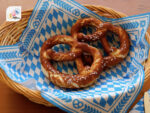
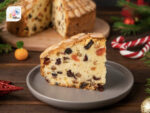


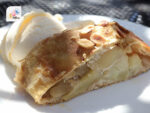
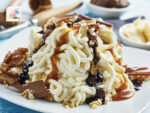
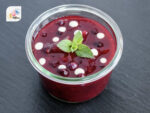

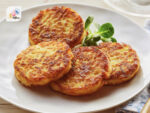
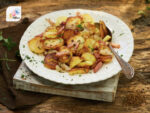
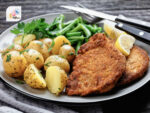
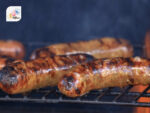

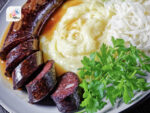
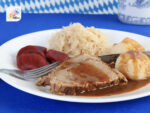
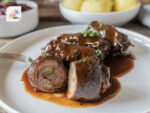
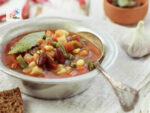

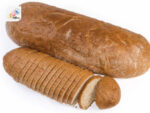
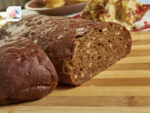

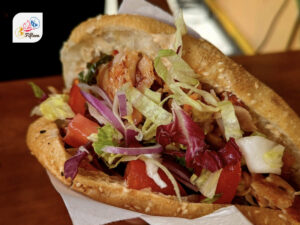
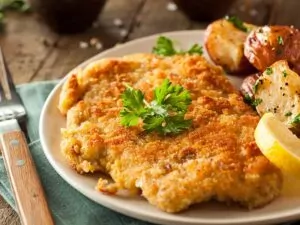
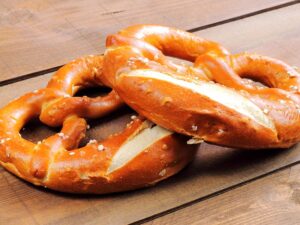
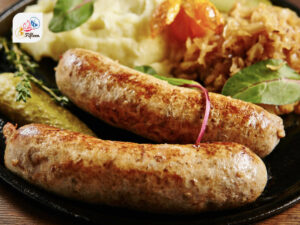
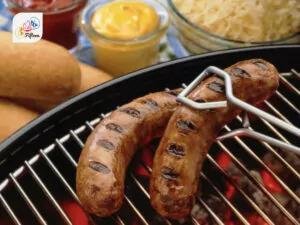
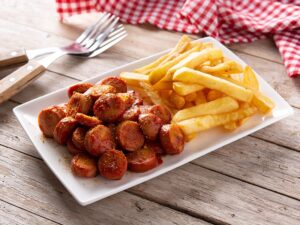

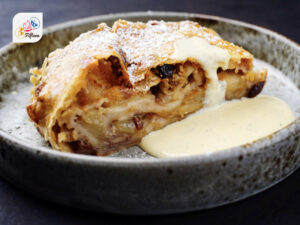
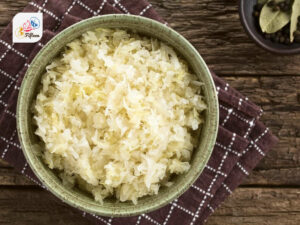
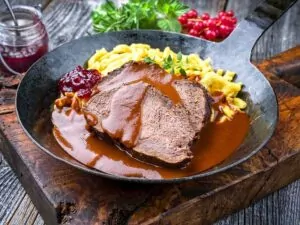


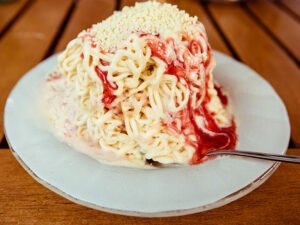
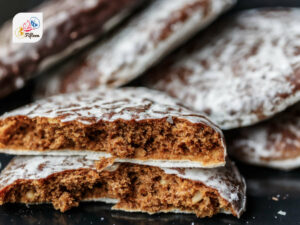
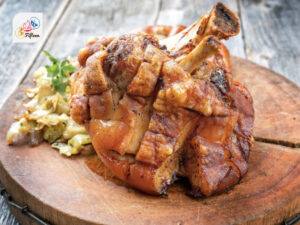
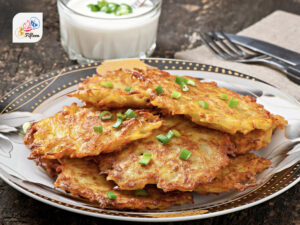
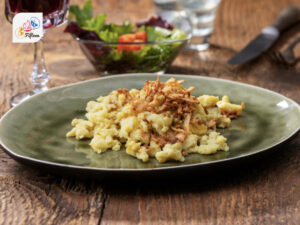
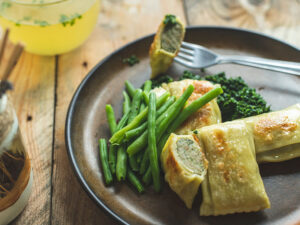
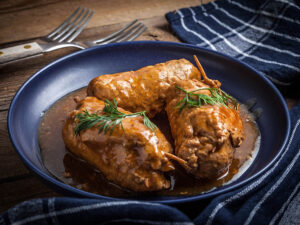
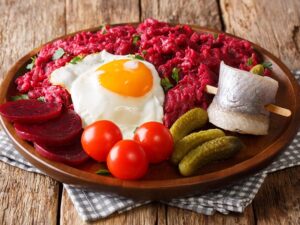
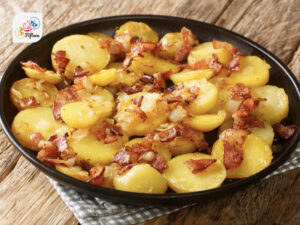
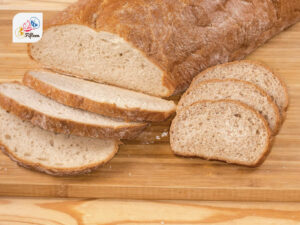
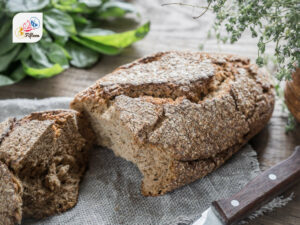
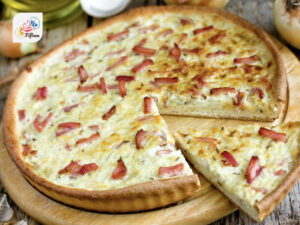
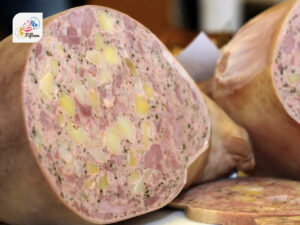
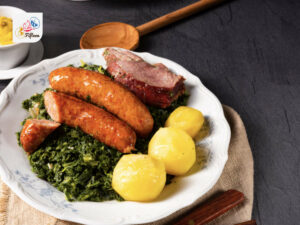
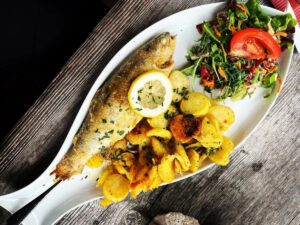
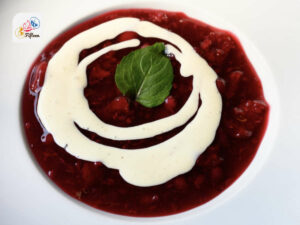
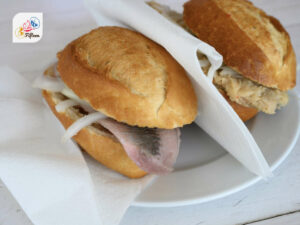
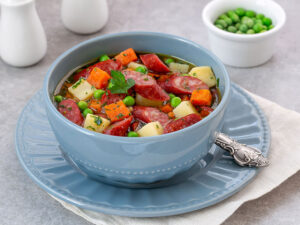
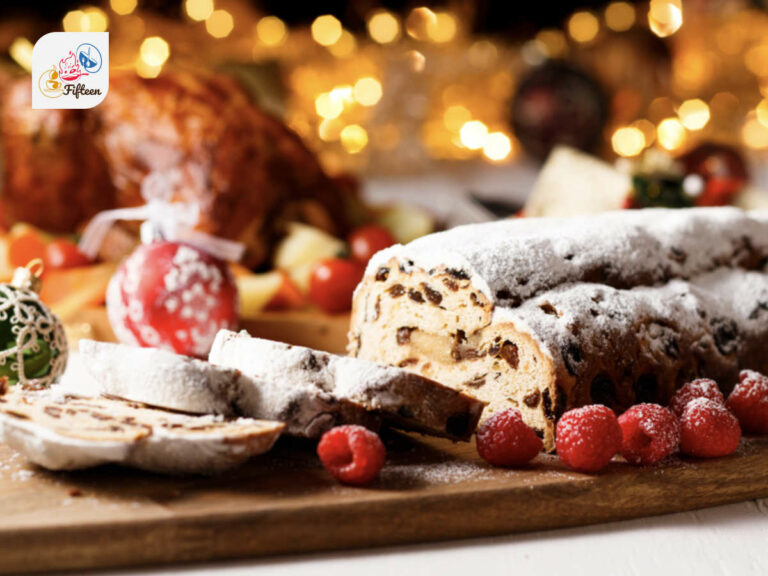
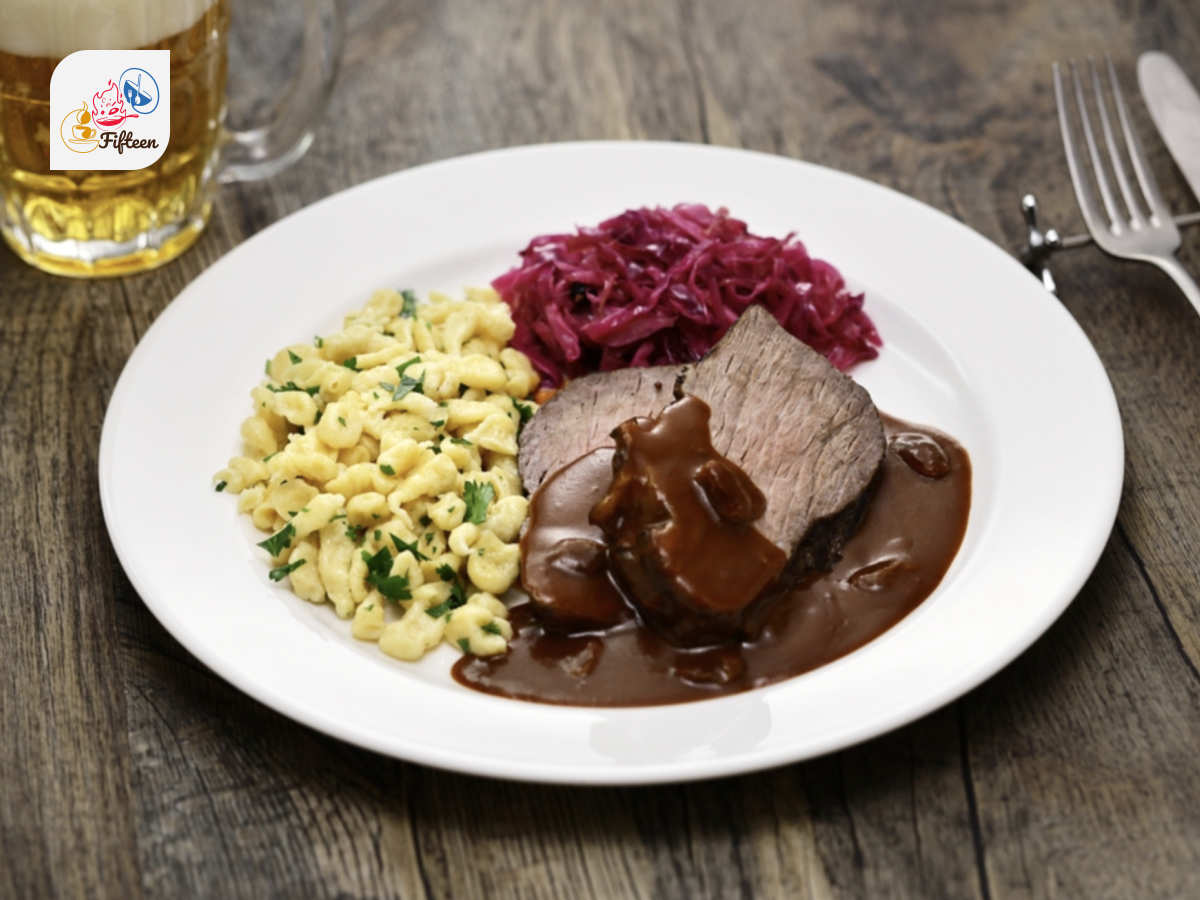
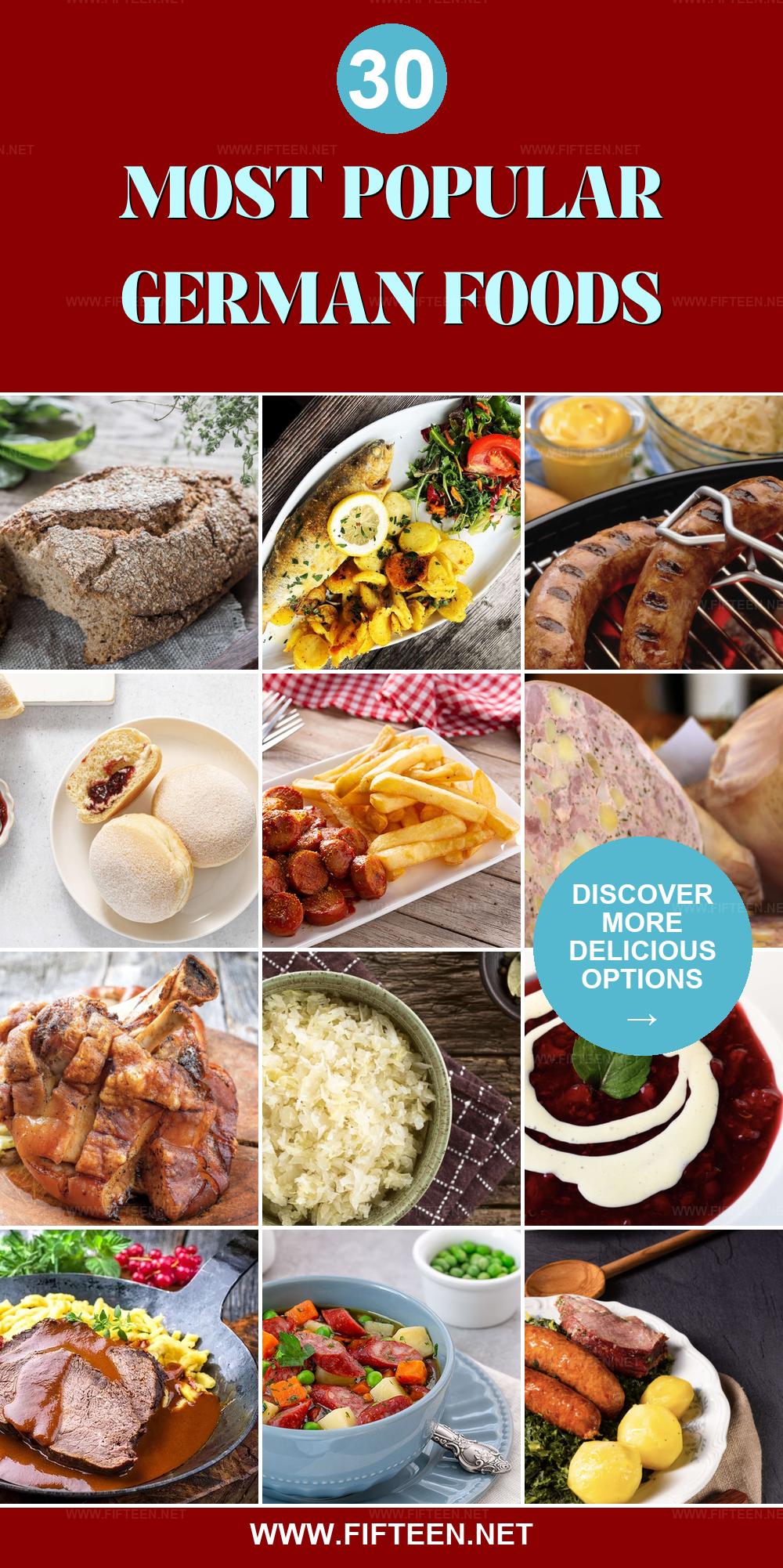
Jamie Scott
Editor in Chief, Senior Content Writer
Expertise
Home Cooking, Meal Planning, Recipe Development, Baking and Pastry, Food Editor, Cooking-video Maker, Western Food Evaluation Expert
Education
Le Cordon Bleu College of Culinary Arts
Local Community College, New York, NY
Jamie Scott is a skilled culinary expert and content creator specializing in Western cuisine. With over 15 years in the culinary field and formal training from Le Cordon Bleu, Paris, Jamie deeply understands how to blend nutrition with delicious flavors. His passion for cooking matches his commitment to making healthy eating accessible and enjoyable.
On Fifteen.net, Jamie brings a fresh perspective to classic dishes and beverages, offering readers insightful recipes, cooking tips, and a fresh view on meal planning that emphasizes taste, health, and simplicity.